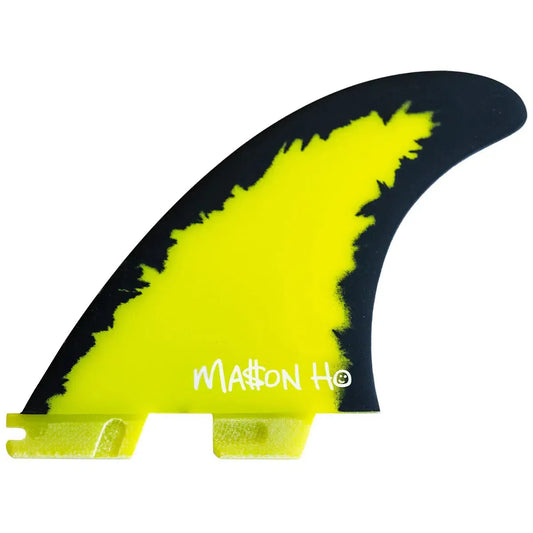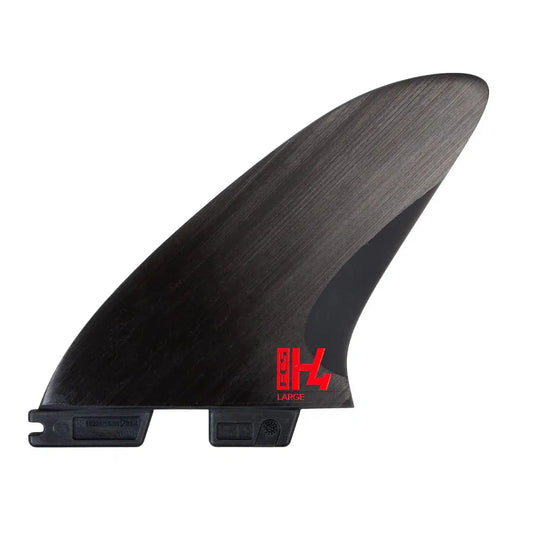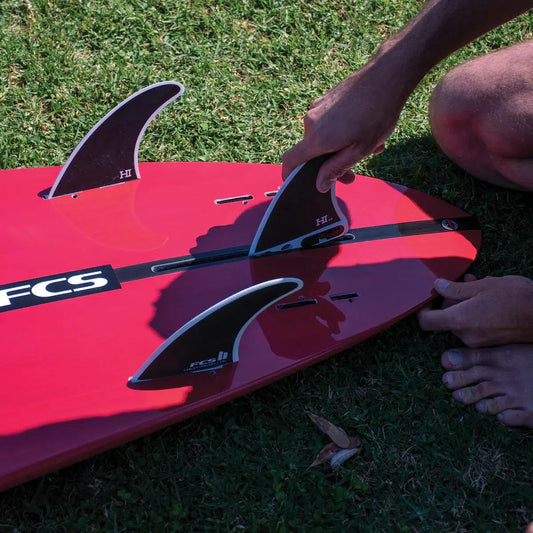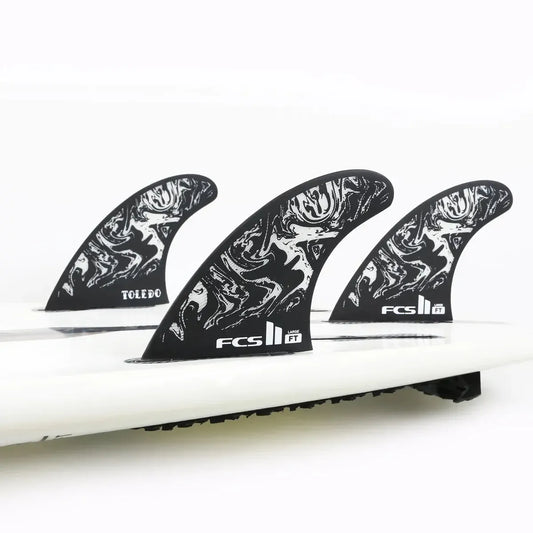Collection: FCS Fins
-
FCS II Mason Ho Signature Tri Fin Set - Medium
Regular price $209.95 AUDRegular price -
FCS II Mick Fanning PG Pro Tri Fin Set
Regular price $189.95 AUDRegular price -
FCS II MF PC Black/White Medium Tri Fins
Regular price $209.95 AUDRegular price -
FCS II Mick Fanning PC Black/White Large Tri Fins
Regular price $209.95 AUDRegular price -
FCS II Mick Fanning PC Black/Olive Large Tri Fins
Regular price $179.95 AUDRegular price -
FCS II Mick Fanning Neo Carbon TRI Fin Set
Regular price $119.95 AUDRegular price -
FCS II H4 Tri Fin Set - Medium
Regular price $239.95 AUDRegular price -

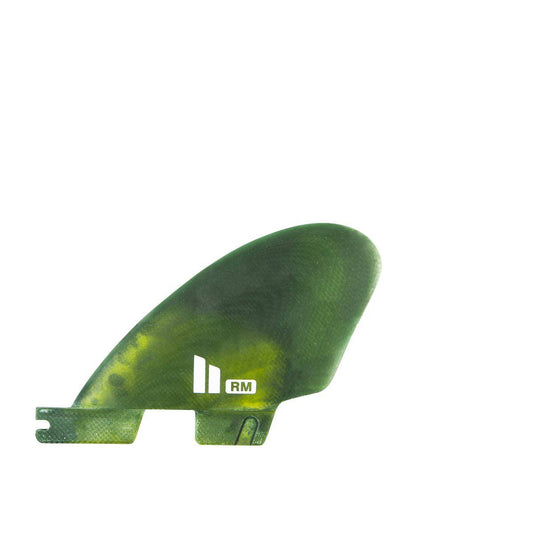 Sold out
Sold outFCS II RM PG Quad Fins - Camo
Regular price $229.95 AUDRegular price -
FCS II Harley Quad Fin Set
Regular price $244.95 AUDRegular price -
FCS II Harley Longboard Tri Fit Set
Regular price $219.95 AUDRegular price -

 Sold out
Sold outFCS II Al Merrick PG Pro Tri Fin
Regular price $189.95 AUDRegular price -
FCS II Filipe Toledo Tri Fin Set - Medium
Regular price $189.95 AUDRegular price -
FCS II Filipe Toledo Tri Fin Set - Large
Regular price $189.95 AUDRegular price -
FCS II Christenson Twin PG Fins - Black
Regular price $204.95 AUDRegular price -
FCS II Mark Richards Twin + Stabilizer Fin Set
Regular price $204.95 AUDRegular price -
FCS II MID CARVER 2 + 1 PG FINS
Regular price $169.95 AUDRegular price
Got Questions? we have answers!
FAQ's
Are surfboard fins universal?
Surfboard fins are not entirely universal, but there are some common standards. The main factors that determine fin compatibility are the fin box type and size, as well as the fin system used. The most common fin systems are:
1. Future Fins: are arguably the best fin system to date. This is because the entire base of the fin sits inside the fin box, creating a solid connection between the surfer and the board. The solid base provides maximum drive and responsiveness, allowing for better performance and control. Future fins are known for offering a strong, locked-in feel, which many surfers appreciate for both power and precision.which uses a different type of base and installation mechanism. Future fins usually require a tool to install them, unlike the tool-less FCS II.
2. FCS (Fin Control System): This is one of the most widely used systems. FCS fins come in two main types: FCS I (old version) and FCS II (tool-less, newer version). The FCS II system has a quick-release mechanism, so you can pop the fins in and out without needing a tool.
3. US Box: This is a more traditional fin box that’s often used on single-fin setups but can also be used with thrusters. It requires screws to secure the fins, and the fin itself has a tab that fits into the box.
4. Glass-on fins: These are fins that are permanently attached to the surfboard during the manufacturing process. They don’t use a removable system, so they’re not interchangeable unless the board is modified.
What size surfboard fins should I use?
The size of surfboard fins you should use depends on several factors, including your weight, surfboard type, wave conditions, and surfing style. Here’s a general guideline to help you choose the right fin size:
1. Fin Size Based on Surfer’s Weight
Most fin brands categorize their fins by weight range:
• XS (Extra Small): Under 120 lbs (55 kg)
• S (Small): 120 - 155 lbs (55 - 70 kg)
• M (Medium): 140 - 180 lbs (65 - 80 kg)
• L (Large): 175 - 210 lbs (80 - 95 kg)
• XL (Extra Large): Over 210 lbs (95 kg)
2. Fin Size Based on Board Type & Wave Conditions
• Shortboards – Ride the fin size that best suits your weight (refer to the weight chart). This ensures optimal performance, maneuverability, and control.
• Step-Up Boards – Designed for bigger waves, step-ups require a slightly different fin approach. Boards shorter than 6'2 in length we recommend riding the size finds that work for your wait. However, for boards longer than 6'2", you should consider drop down in fin size because the board’s longer rail line naturally generates more hold. This allows you to ride smaller fins while maintaining stability and control.
By adjusting your fin size based on board length and wave conditions, you can fine-tune your setup for maximum performance in any surf.
3. Fin Size Based on Surfing Style
• More vertical, high-performance surfing: Medium to large fins with a balanced template.
• Speed & down-the-line surfing (point breaks, barrels): Larger fins for control and drive.
• Loose & playful surfing (airs, quick turns): Smaller fins or a twin-fin setup for more release.
4. Fin Setup Considerations
• Thruster (3 fins): Most common setup, providing a balance of speed, control, and maneuverability.
• Quad (4 fins): More speed and hold, great for bigger or hollow waves.
• Twin Fin (2 fins): Loose and fast, ideal for retro boards and fun waves.
• Single Fin: Classic feel, more drawn-out turns, often used on longboards and mid-lengths.
If you’re unsure, a medium-sized fin (if you’re in the weight range of 65 - 80 kg) is a safe starting point. You can always experiment with different sizes and setups to find what works best for your board style and the conditions you surf in!
Why are surfboard fins so expensive?
Surfboard fins can be expensive due to several key factors:
1. High-Quality Materials
Most premium fins are made from fiberglass, carbon fiber, or composite materials. These materials are lightweight, durable, and provide optimal flex and performance. Some cheaper fins are made from plastic, but they lack the same level of responsiveness and strength.
2. Advanced Manufacturing Processes
High-end fins undergo complex manufacturing processes such as resin transfer molding (RTM), honeycomb construction, and carbon layups, which enhance durability, flex, and performance. These processes require precision and expertise, adding to production costs.
3. Performance Engineering & Research
Leading fin companies like Futures and FCS invest heavily in hydrodynamic research and development. They test different templates, flex patterns, and foils to maximize speed, control, and maneuverability, which drives up costs.
4. Durability & Longevity
Well-made fins last a long time, even under heavy use. While cheaper plastic fins might wear out or break, premium fins maintain their performance and structural integrity, making them a long-term investment.
5. Branding & Professional Endorsements
Many high-end fins are designed in collaboration with pro surfers and shapers, adding exclusivity and credibility to the product. Limited edition or signature fins often come at a premium price.
6. Fin System Compatibility & Innovation
Fins are designed to fit specific fin systems (Futures, FCS, etc.), and companies continue to innovate to make them lighter, stronger, and more functional (like FCS II’s tool-less system), which adds to costs. While expensive, quality fins can significantly enhance your surfing experience, offering better drive, hold, and responsiveness compared to cheaper alternatives.
If you’re serious about performance, investing in a good set of fins can be well worth it!
What do surfboard fins do?
Surfboard fins play a crucial role in a board’s performance by providing stability, control, drive, and maneuverability. Here’s how they impact your surfing:
1. Stability & Control
Fins help keep the board stable and balanced by preventing it from sliding out when turning or riding down the face of a wave. Without fins, the board would feel extremely loose and difficult to control.
2. Drive & Speed
Fins channel water flow beneath the board, creating forward momentum (drive) and helping you maintain speed through turns and down the line. Larger and stiffer fins typically generate more drive.
3. Maneuverability & Turning Ability
The fin setup affects how easily you can turn. Smaller fins allow for quicker, looser turns, while larger fins provide more control and drawn-out arcs. The placement and number of fins also influence maneuverability.
4. Hold & Traction
Fins create grip on the wave, preventing the board from sliding out, especially in critical sections. More hold is ideal for bigger, steeper waves, while looser setups are better for playful, small waves.
5. Customization & Performance Tuning
Different fin setups allow surfers to tweak their board’s performance:
• Thruster (3 fins): Balanced control and maneuverability, the most common setup.
• Quad (4 fins): More speed and hold, great for bigger waves.
• Twin Fin (2 fins): Loose and fast, fun for small waves.
• Single Fin: Classic feel, smooth turns, and drawn-out lines.
Fins are essential to how a surfboard performs, and choosing the right setup can make a huge difference in your surfing experience.







